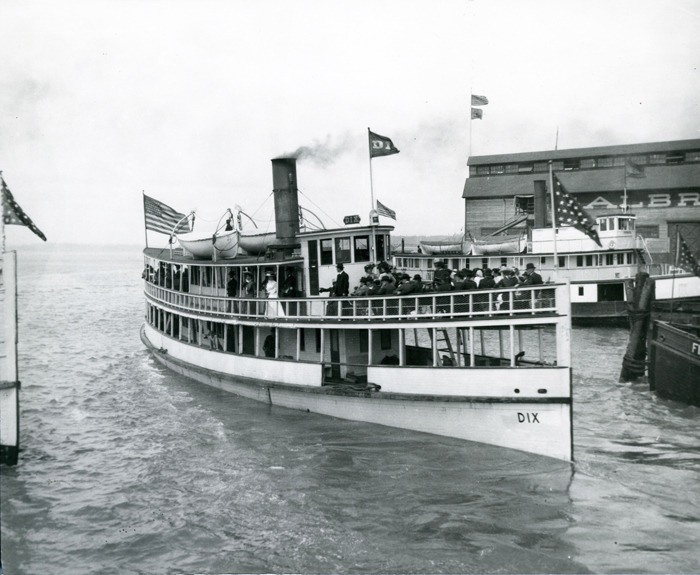If, in fact, the ship sitting 500 feet deep in Elliott Bay is the SS Dix, there finally may be some degree of closure for the families of the estimated 45 people who perished in the November 1906 sinking of the Mosquito Fleet ferry.
The Dix sank off Alki Point after a collision with the Alaskan freighter SS Jeanie, as it was transporting about 80 Port Blakely millworkers and their families home after a weekend in Seattle.
The sinking happened so quickly that most of the people sitting below deck never had a chance to escape.
The location of the Dix had been a mystery until this week when OceanGate, an Everett-based marine exploration company, made public the results of three different sonar scans from its manned submarine in March and April.
“The issue in identifying it without question is the murky water,” said Joel Perry of OceanGate. “We’re reasonably sure it’s the Dix, but not positive,” Perry said. “We got a good view of it, but it’s so murky down there that after about 10 feet the details break down. So we have to do more.”
The plan is to mount a 3-D sonar head on OceanGate’s electric-powered submarine to gather a 360-degree digital scan of the wreckage next Tuesday and Wednesday.
“That will give us an accurate gauge of what’s remaining of the superstructure and other components,” he said. “Then we’ll know positively if it’s the Dix.”
Finding the Dix has been an obsession of Seattle diver Laura James for nearly two decades.
Many years ago James used a fish-finding device to discover what she thought was the Dix, though others thought the vessel had sunk closer to mid-channel.
She became more determined after the National Oceanic and Atmospheric Administration took photographs of the bottom of the Puget Sound, which revealed Dix wasn’t where most experts thought it was. James then enlisted Scott Boyd of Northwest Wreck Dive to use a remote operated vehicle (ROV) in March to do a sonar scan, which produced enough information to entice OceanGate to get involved.
The 15-foot-long sub, which holds up to five people for several hours at depths of more than 900 feet, will be able to sit on the bottom of Puget Sound long enough to digitally scan the entire exterior of the vessel.
“The ROV had good direction and you could clearly see that it had the right characteristics of that type of boat,” Perry said. “And after our look, we’re pretty sure it’s the Dix.”
The 102-foot, 130-ton steamer had sailed under the flag of the Alki Point Transportation Company for two years. The company was one of many marine firms that ferried passengers and cargo around Puget Sound in the Mosquito Fleet days.
The collision occurred after Dix’s Capt. Percy Lermond turned the helm of the boat over to a first officer so that he could collect tickets from passengers. About two miles off Alki, the helmsman made a judgment error and the southbound Jeanie, a 1,071-ton freighter headed for Tacoma, rammed Dix just aft of amidships. It rolled and sank almost immediately.
Perry said there will be no contact made with the sunken ship, which, after settling into a saltwater grave for more than 100 years, is undoubtedly fragile.
“We have two missions for doing this and there will be no financial gain,” said Perry. For one, it will serve as a training mission for a 3-D scan of a sunken freighter off the north coast of California this summer.
He said it’s also a worthy project because it will provide closure to a historical event that has remained unresolved for more than a century.
The main goal, he hopes, is to do some good.
“If it is the Dix, then it’s our intention to go back this summer and do a memorial for the families over where it went down,” Perry said. “At least, if the families want that. It’s up to them.”


